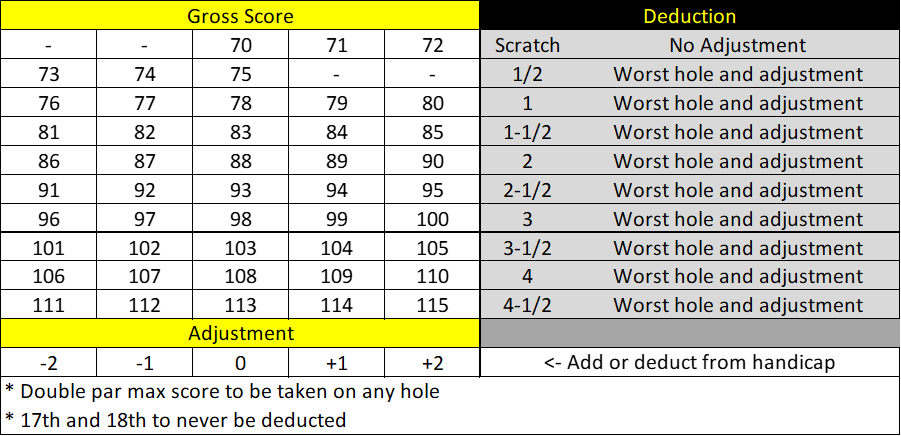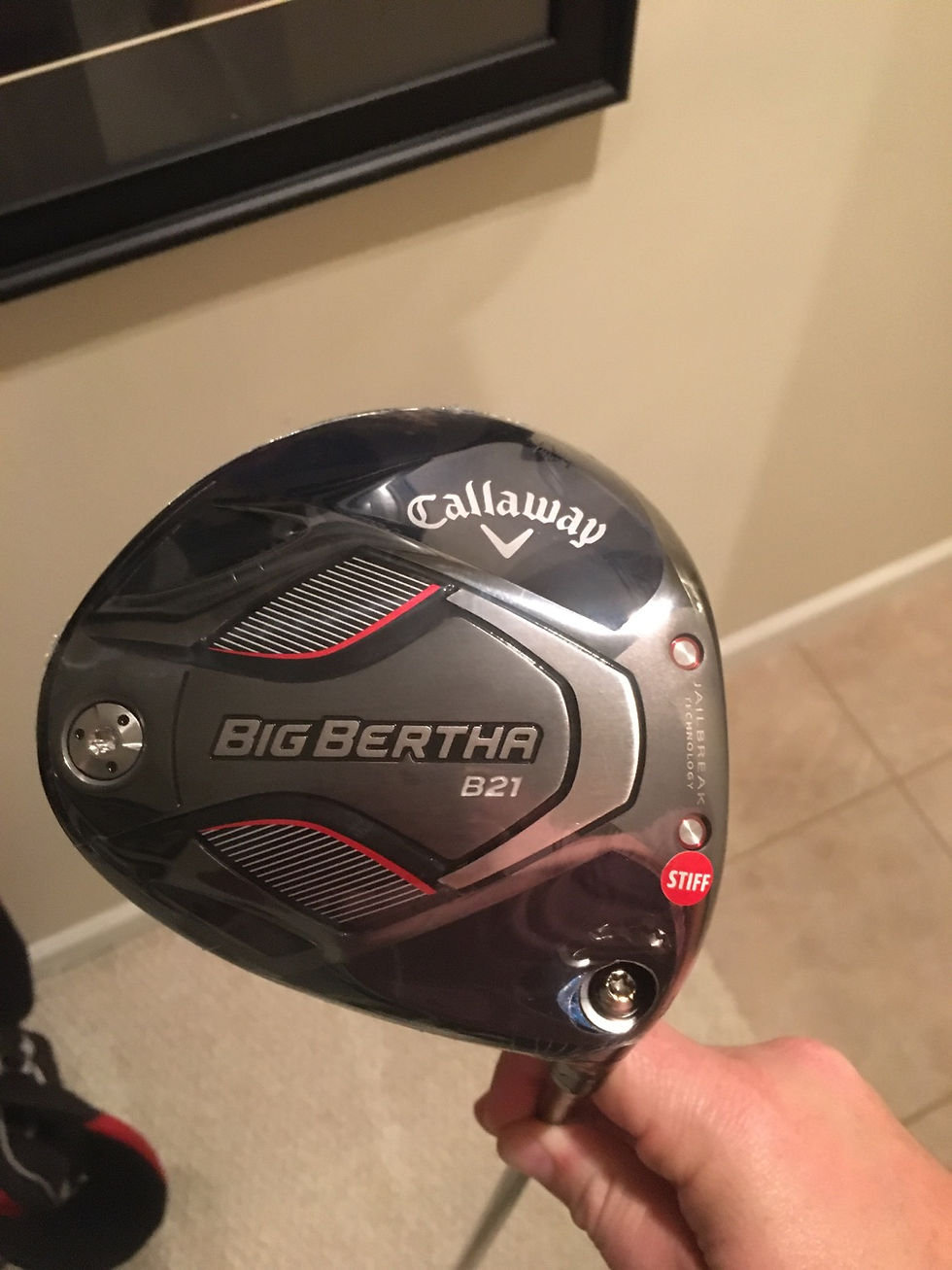Callaway Handicap Scoring System
- The Pittsburgh Golf Hack
- May 4, 2023
- 5 min read
We've all got that golf buddy in our group if not several, where their golf handicaps just don't seem to add up to the play they have on the course. In a perfect world, every golfer with a golf handicap would only input rounds that are played in adherence to the USGA rules of golf. Meaning that rounds with gimmies, rounds played alone, and rounds with mulligans would not be entered into the system. That percentage of golfers seems to be just about as low as the percentage of golfers that can also call themselves scratch golfers.
The reality is that some amateur golfers that claim to keep an active handicap fall into one of two separate ends of the spectrum. On one side we have the golfer that only puts in their best rounds and loves to brag about how low their handicap is. This is what we call the vanity handicapper. On the opposite side we have the golfer that only likes to record their worst scores in order to inflate their handicap so they always have a chance at winning money or prizes in net scoring competitions. We call this person the sandbagger. Both of these individuals cause chaos when a group of people are trying to play in net competitions because they erode the very purpose of a what a golf handicap is supposed to do in the first place. Which would be to level the playing field and allow for competitive play among golfers of all skill levels.
We all know those two guys in the group that have fake handicaps that are going to ruin it for the rest of the group, and it often seems there is no solution to it. There's always those that prefer two-day events where the second day flights are based on performance of day one instead of using a handicap, but most weekend warriors don't have two days to give up for a golf tournament. However, a person can even sandbag in that event by just simply putting a big number on the card on day one, and then firing their normal lower score on day two. It seems like there's no good way to fix the problem.
What if I was to tell you there is a better way to score that next outing with friends than using the normal handicap system? Recently I was in Williamsburg, VA on a golf trip with one of my friends and entered into the Invicta Challenge at Royal New Kent golf course. When first asked if we wanted to play in their open tournament, the first question out of my mouth was do you need to see my GHIN? The guy quickly replied no, that they would be using the Callaway Scoring System, and he could bring all the net scores of the group to within 5 or 7 strokes of each other using a software on his PC. Not knowing what in the world he was talking about, I gave the man my money, and onto the course we went.
As it turns out, the Callaway Scoring System is a unique scoring method that can be used with golfers of all skill levels, and by using your gross score can create a net score that creates equity amongst the group for a one-round event. After doing some research, the Callaway Scoring System is not owned by Callaway the golf company in any way shape for form. Even though I was super excited in thinking it was due to my undeniable love for the brand. Apparently, back in the 1950's a man by the name of Lionel Frank Callaway set out on a mission to come up with a way to score club outings fairly in order to eliminate the possibility of sandbaggers spoiling the party for all involved. He came up with the official Callaway Handicap Scoring System that has lasted for years thereafter.

The way the system works is simple, the table developed by Mr. Callaway is used to determine how much forgiveness each player will get. In short, the worse you play the more forgiveness you get, and that forgiveness is given by allowing you to deduct some of your worst holes on holes 1-16. No forgiveness is given to anyone on holes 17 and 18 and nobody is permitted to record a score of any higher than double par. Which in essence controls equitable stroke play by not allowing really high handicappers to skew the system, and forcing good performance on at least a couple holes.
You start off by looking at the gross score of each player. Using the original system created by Mr. Callaway (See Image Above), you will see the table, instructions on how much forgiveness (worst scores) will be given, and plus or minus any adjustments as indicated underneath the table.
Let's take two golfers on completely different ends of the spectrum for example. Golfer A shoots a gross score of 79 and Golfer B shoots a gross score of 100. Starting with Golfer A, we go to the table, and we see that for a 79 Golfer A gets to deduct their single (1) worst score on holes 1-16. It just so happens that Golfer A shot a 6 on the Par 4 hole number 5. Because of this, Golfer A's deduction will be 6, but we must now apply any adjustments called out by the table. If we look underneath the column for 79, we will see an adjustment of +1. Adding that to 6 we now have 7 which becomes Golfer A's Callaway Handicap, meaning they will be receiving 7 strokes for a net score of 72.
Now we look at Golfer B and can see from the table that a 100 allows the player to take 3 deductions on holes 1-16. As it turns out, Golfer B's worst scores were a 10, one 9, and a 7 within the first 16 holes. Adding these three worst hole scores gives Golfer B a deduction of 26, but we then must look for the adjustments called out by the table. Looking under the column for 100 we see the player needs an adjustment of +2. Adding this to the 26 strokes gives Golfer B a Callaway Handicap of 28. Which in turn gives Golfer B a net total score of 72. Even though Golfer B obviously played worse than Golfer A, the Callaway Handicap Scoring System allowed these two golfers to actually score the same net score of 72 for the round.
Now the group can get creative on how they want to settle their dual such as a putt-off or a scorecard runoff. This also takes the sandbaggers and vanity handicappers out of the equation because they can't manipulate the system. Many iterations of this Callaway Handicap Scoring System exists in the golf world today, but many amateur golfers have no idea this system exists. I know up until recently I had never heard of it, and I have been playing for over 25 years.
So, the next time you and the gang or your local club decide to tee it up with some prize money or bragging rights on the line, consider using the Callaway Handicap Scoring System to keep things even amongst the field. It's a very unique way of keeping things even, and after my first experience with it I thoroughly enjoyed it.
P.S. if you are looking for an easy electronic tool that will do the math for you easily on a mobile device, I recommend the Cruncher app that can be found on the Apple and Google Play applications stores.
Til the next time - Yinz get out there, hit em straight, and keep on hackin!
-The Pittsburgh Golf Hack




Comments